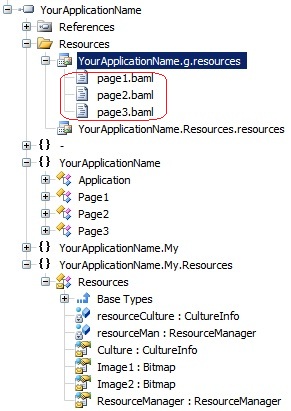|
|
|
Every WPF .NET production-quality application uses resources. A resource is any nonexecutable data that is logically deployed with an application. A resource might be displayed in an application as error messages or as part of the user interface. Resources can contain data in a number of forms, including strings, images, BAMLs, and persisted objects. A XAML file can be compiled into a .baml (Binary XAML) file, which may be inserted as a resource into a .NET Framework assembly. |
|
|
|







